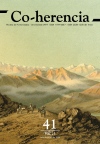The Impact of the Lyrical Fourth Dimension in Ambrose Bierce’s Satirical Poetry: An Analysis of the Phonological Expressive Device in Two of his Poems
Main Article Content
Keywords
Ambrose Bierce, lyrics, poetic multidimensionality, phonological dimension, satiric poetry, Shapes of Clay, speech
Abstract
The purpose of this paper is to show that the phonological component in Ambrose Bierce’s poetry provides an expressive device through which the satirist more effectively conveys the social criticism underlying his compositions. The use of this component, along with a satirical and ironic tone, combine in the poetic object to signal more clearly to the reader Bierce’s denunciation of various members of fin de siècle American society. More specifically, this analysis focuses on “Arma Virumque” and “King of Bores”, poems from his collection Shapes of Clay, in which the poet lampoons the American military institution and the figure of the “bore”, respectively. This study follows the ideas of Abrams (2012) on the “fourth dimension” of the poem, or in other words, the meanings that the phonological features of a lyrical composition suggest from its recitation. The results of this study suggest that this device allows readers to experience in their own bodies, through the vocal tract, the harsh social critique that Bierce presents in his poems.
Downloads
References
Adrjan, P., & Muñoz-Basols, J. (2003). The Sound of Humor: Linguistic and Semantic Constraints in the Translation of Phonological Jokes. SKY Journal of Linguistics, 16, 239-246. https://n9.cl/jxaff.
Aryani, A., Kraxenberger, M., Ullrich, S., Jacobs, A. M., & Conrad, M. (2016). Measuring the basic affective tone of poems via phonological saliency and iconicity. Psychology of Aesthetics, Creativity, and the Arts, 10(2), 191-204. https://doi.org/10.1037/aca0000033.
Berkove, L. (2002). A Prescription for Adversity. The Moral Art of Ambrose Bierce. Ohio State University Press.
Bierce, A. (1903). Shapes of Clay. W. E. Wood Publisher.
Bierce, A. (1911). To Train a Writer. En A. Bierce (Ed.), The Collected Works: The Opinionator (pp. 75-79). Neale Publishing.
Bierce, A. (1922). The Letters. En B. Clark (Ed.), The Letters of Ambrose Bierce (pp. 33-245). The California Book Club.
Bierce, A. (1980). The Seamy Side of It. En L. Berkove (Ed.), Skepticism and Dissent. Selected Journalism from 1898-1901 (pp. 7-11). Delmas.
Bierce, A. (2011). Cuentos negros (A. Ibarrola, Trad.). Alianza.
Bierce, A. (2016). Cuentos inquietantes (A. Ibarrola, Trad.). Alianza.
Bierce, A. (2019). El diccionario del diablo (V. Campos, Trad.). Sexto Piso.
Bierce, A. (2021). Poemas de barro (A. García, Trad.). Verbum.
Clark, B. (1922). Introduction. En B. Clark (Ed.), The Letters of Ambrose Bierce (pp. 6-23). The California Book Club.
Fatout, P. (1951). Ambrose Bierce. The Devil’s Lexicographer. University of Oklahoma Press.
Ferlinghetti, L., & N. Peters. (1980). Literary San Francisco. A Pictorial History from its Beginnings to the Present Day. City Lights Books.
Grattan, C. H. (1929). Bitter Bierce: A Mystery of American Letters. Doubleday, Doran & Company.
Grenander, M. (1996). Introduction. En M. Grenander (Ed.), Poems of Ambrose Bierce (pp. 13-43). University of Nebraska Press.
Hart, J. (1931). In Our Second Century from an Editor’s Note-Book. The Pioneer Press.
Ibarrola, A. (2011). Unas palabras acerca de los Cuentos negros de Ambrose Bierce. En A. Ibarrola (Ed.), Cuentos negros (pp. 131-143). Alianza.
Joshi, S. T. (2013). A Triumvirate of Fantastic Poets: Ambrose Bierce, George Sterling, and Clark Ashton Smith. Extrapolation, 54(2), 147-161. https://doi.org/10.3828/extr.2013.9.
Klarer, M. (2004). An Introduction to Literary Studies (2.a ed.). Routledge.
Kristeva, J. (1974). Phonetics, Phonology and Impulsional Bases. Diacritics, 4(3), 33-37. https://doi.org/10.2307/465110.
Lehan, R. (2005). Realism and Naturalism. The Novel in an Age of Transition. University of Wisconsin Press.
Linneman, W. R. (1962). Satires of American Realism, 1880-1900. American Literature, 34(1), 80-93. https://doi.org/10.2307/2922247.
Lord, J. B. (1975). Syntax and Phonology in Poetic Style. Style, 9(1), 1-31. http://www.jstor.org/stable/45108346.
McWilliams, C. (1929). Ambrose Bierce. A Biography. Albert & Charles Boni.
Merriam-Webster Dictionary. (2024). Fiddlefaddle. https://n9.cl/3ztp5.
Minnick, L. C. (2004). Dialect and Dichotomy. Literary Representations of African American Speech. University of Alabama Press.
Morris, R. (1998). Ambrose Bierce. Alone in Bad Company. Oxford University Press.
Newcomb, J. T. (2004). Would Poetry Disappear? American Verse and the Crisis of Modernity. Ohio State University Press.
Osterbrock, C. (2021). Augusto/Hopkins. Translation and the Fourth Dimension of a Poem. Santa Barbara Portuguese Studies, 8, 121-135. https://n9.cl/iufk3z.
Parrish, A. (2017). Poetic Sound Similarity Vectors Using Phonetic Features. Proceedings of the AAAI Conference on Artificial Intelligence and Interactive Digital Entertainment, 13(2), 99-106. https://doi.org/10.1609/aiide.v13i2.12971.
Sidney-Fryer, D. (1980). Introduction. En D. Sidney-Fryer (Ed.), A Vision of Doom. Poems by Ambrose Bierce (pp. 9-29). M. Grant Publisher.
Sidney-Fryer, D. (2011). The Golden State Phantasticks. The California Romantics and Related Subjects. Hippocampus Press.
Sterling, G. (1922). A Memoir of Ambrose Bierce. En B. Clark (Ed.), The Letters of Ambrose Bierce (pp. 23-32). The California Book Club.
Sterling, G. (1925, septiembre). The Shadow Maker. American Mercury, (6), 10-19.
Ufot, B.G. (2013). Phonology and Stylistics: A Phonaesthetic Study of Gray’s ‘Elegy Written in a Country Churchyard’. English Linguistics Research, 2(2), 110-125. https://doi.org/10.5430/elr.v2n2p110.
Zink, S. (1945). The Poetic Organism. The Journal of Philosophy, 42(16), 421-433. https://doi.org/10.2307/2019658.





